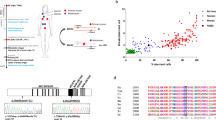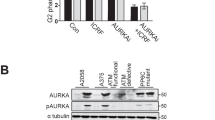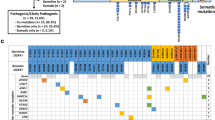Abstract
In myelodysplastic syndromes (MDS) increased chromosomal breaks point toward defects in DNA repair machinery including base excision repair (BER) pathway involved in handling of oxidative DNA damage. We investigated whether defects in this pathway can be found in MDS. Elevated levels of 8-oxoguanine (8-OG) were found in a significant proportion of MDS patients, indicating increased oxidative DNA damage or defective handling of oxidative load. In a distinct subgroup of patients, increased 8-OG content was associated with increased hOGG1 mRNA expression and activity. In some patients, increased numbers of abasic sites (AP sites) correlated with low levels of POLβ. To further investigate the nature of this defect, we examined genetic lesions potentially explaining accumulation of 8-OG and AP sites. We genotyped a large cohort of MDS patients and found a correlation between increased oxidative damage and the presence of the hOGG1-Cys326 allele suggesting inadequate compensatory feedback. Overall, this hOGG1 variant was more frequent in MDS, particularly in advanced forms, as compared to controls. In summary, we demonstrated that BER dysfunction in some MDS patients may be responsible for the increased 8-OG incorporation and explains one aspect of the propensity to chromosomal breaks in MDS but other mechanisms may also be involved.
This is a preview of subscription content, access via your institution
Access options
Subscribe to this journal
Receive 12 print issues and online access
$259.00 per year
only $21.58 per issue
Buy this article
- Purchase on Springer Link
- Instant access to full article PDF
Prices may be subject to local taxes which are calculated during checkout




Similar content being viewed by others
References
Fenaux P . Chromosome and molecular abnormalities in myelodysplastic syndromes. Int J Hematol 2001; 73: 429–437.
Gondek LP, Tiu R, Haddad AS, O'Keefe CL, Sekeres MA, Theil KS et al. Single nucleotide polymorphism arrays complement metaphase cytogenetics in detection of new chromosomal lesions in MDS. Leukemia 2007; 21: 2058–2061.
Nijnik A, Woodbine L, Marchetti C, Dawson S, Lambe T, Liu C et al. DNA repair is limiting for haematopoietic stem cells during ageing. Nature 2007; 447: 686–690.
Rossi DJ, Bryder D, Seita J, Nussenzweig A, Hoeijmakers J, Weissman IL . Deficiencies in DNA damage repair limit the function of haematopoietic stem cells with age. Nature 2007; 447: 725–729.
Kuramoto K, Ban S, Oda K, Tanaka H, Kimura A, Suzuki G . Chromosomal instability and radiosensitivity in myelodysplastic syndrome cells. Leukemia 2002; 16: 2253–2258.
Karran P, Offman J, Bignami M . Human mismatch repair, drug-induced DNA damage, and secondary cancer. Biochimie 2003; 85: 1149–1160.
Fern L, Pallis M, Ian CG, Seedhouse C, Russell N, Byrne J . Clonal haemopoiesis may occur after conventional chemotherapy and is associated with accelerated telomere shortening and defects in the NQO1 pathway; possible mechanisms leading to an increased risk of t-AML/MDS. Br J Haematol 2004; 126: 63–71.
Lindahl T, Wood RD . Quality control by DNA repair. Science 1999; 286: 1897–1905.
Cooke MS, Evans MD, Dizdaroglu M, Lunec J . Oxidative DNA damage: mechanisms, mutation, and disease. FASEB J 2003; 17: 1195–1214.
Marnett LJ . Oxyradicals and DNA damage. Carcinogenesis 2000; 21: 361–370.
Hussain SP, Hofseth LJ, Harris CC . Radical causes of cancer. Nat Rev Cancer 2003; 3: 276–285.
Farquhar MJ, Bowen DT . Oxidative stress and the myelodysplastic syndromes. Int J Hematol 2003; 77: 342–350.
Toyokuni S, Okamoto K, Yodoi J, Hiai H . Persistent oxidative stress in cancer. FEBS Lett 1995; 358: 1–3.
Wood RD, Mitchell M, Sgouros J, Lindahl T . Human DNA repair genes. Science 2001; 291: 1284–1289.
Samson L, Cairns J . A new pathway for DNA repair in Escherichia coli. Nature 1977; 267: 281–283.
Memisoglu A, Samson L . Base excision repair in yeast and mammals. Mutat Res 2000; 451: 39–51.
Hoeijmakers JH . Genome maintenance mechanisms for preventing cancer. Nature 2001; 411: 366–374.
Lengauer C, Kinzler KW, Vogelstein B . Genetic instabilities in human cancers. Nature 1998; 396: 643–649.
Frosina G . Overexpression of enzymes that repair endogenous damage to DNA. Eur J Biochem 2000; 267: 2135–2149.
Canitrot Y, Cazaux C, Frechet M, Bouayadi K, Lesca C, Salles B et al. Overexpression of DNA polymerase beta in cell results in a mutator phenotype and a decreased sensitivity to anticancer drugs. Proc Natl Acad Sci USA 1998; 95: 12586–12590.
Glassner BJ, Rasmussen LJ, Najarian MT, Posnick LM, Samson LD . Generation of a strong mutator phenotype in yeast by imbalanced base excision repair. Proc Natl Acad Sci USA 1998; 95: 9997–10002.
Powell CL, Swenberg JA, Rusyn I . Expression of base excision DNA repair genes as a biomarker of oxidative DNA damage. Cancer Lett 2005; 229: 1–11.
Grollman AP, Moriya M . Mutagenesis by 8-oxoguanine: an enemy within. Trends Genet 1993; 9: 246–249.
Beckman KB, Ames BN . Oxidative decay of DNA. J Biol Chem 1997; 272: 19633–19636.
Boiteux S, Radicella JP . The human OGG1 gene: structure, functions, and its implication in the process of carcinogenesis. Arch Biochem Biophys 2000; 377: 1–8.
Shinmura K, Yokota J . The OGG1 gene encodes a repair enzyme for oxidatively damaged DNA and is involved in human carcinogenesis. Antioxid Redox Signal 2001; 3: 597–609.
Matsumoto Y, Kim K . Excision of deoxyribose phosphate residues by DNA polymerase beta during DNA repair. Science 1995; 269: 699–702.
Harris NL, Jaffe ES, Diebold J, Flandrin G, Muller-Hermelink HK, Vardiman J et al. World Health Organization classification of neoplastic diseases of the hematopoietic and lymphoid tissues: report of the Clinical Advisory Committee meeting-Airlie House, Virginia, November 1997. J Clin Oncol 1999; 17: 3835–3849.
List AF, Vardiman J, Issa JP, DeWitte TM . Myelodysplastic syndromes. Hematol Am Soc Hematol Educ Program 2004, 297–317.
Park J, Chen L, Tockman MS, Elahi A, Lazarus P . The human 8-oxoguanine DNA N-glycosylase 1 (hOGG1) DNA repair enzyme and its association with lung cancer risk. Pharmacogenetics 2004; 14: 103–109.
Kohno T, Shinmura K, Tosaka M, Tani M, Kim SR, Sugimura H et al. Genetic polymorphisms and alternative splicing of the hOGG1 gene, that is involved in the repair of 8-hydroxyguanine in damaged DNA. Oncogene 1998; 16: 3219–3225.
Evans MD, Dizdaroglu M, Cooke MS . Oxidative DNA damage and disease: induction, repair and significance. Mutat Res 2004; 567: 1–61.
Kasai H . Analysis of a form of oxidative DNA damage, 8-hydroxy-2′-deoxyguanosine, as a marker of cellular oxidative stress during carcinogenesis. Mutat Res 1997; 387: 147–163.
Honda M, Yamada Y, Tomonaga M, Ichinose H, Kamihira S . Correlation of urinary 8-hydroxy-2′-deoxyguanosine (8-OHdG), a biomarker of oxidative DNA damage, and clinical features of hematological disorders: a pilot study. Leuk Res 2000; 24: 461–468.
Mambo E, Chatterjee A, de Souza-Pinto NC, Mayard S, Hogue BA, Hoque MO et al. Oxidized guanine lesions and hOgg1 activity in lung cancer. Oncogene 2005; 24: 4496–4508.
Wei Q, Cheng L, Hong WK, Spitz MR . Reduced DNA repair capacity in lung cancer patients. Cancer Res 1996; 56: 4103–4107.
Cheng L, Eicher SA, Guo Z, Hong WK, Spitz MR, Wei Q . Reduced DNA repair capacity in head and neck cancer patients. Cancer Epidemiol Biomarkers Prev 1998; 7: 465–468.
Chen SK, Hsieh WA, Tsai MH, Chen CC, Hong AI, Wei YH et al. Age-associated decrease of oxidative repair enzymes, human 8-oxoguanine DNA glycosylases (hOgg1), in human aging. J Radiat Res (Tokyo) 2003; 44: 31–35.
Kondo S, Toyokuni S, Tanaka T, Hiai H, Onodera H, Kasai H et al. Overexpression of the hOGG1 gene and high 8-hydroxy-2′-deoxyguanosine (8-OHdG) lyase activity in human colorectal carcinoma: regulation mechanism of the 8-OHdG level in DNA. Clin Cancer Res 2000; 6: 1394–1400.
Hung RJ, Hall J, Brennan P, Boffetta P . Genetic polymorphisms in the base excision repair pathway and cancer risk: a HuGE review. Am J Epidemiol 2005; 162: 925–942.
Acknowledgements
This study was supported in parts by RO1HL-082983, U54 RR019391 and K24 HL-077522 awarded to JPM and by Young Investigator Award from AA&MDS International Foundation awarded to LPG.
Author information
Authors and Affiliations
Corresponding author
Additional information
Disclosure/Conflict of Interests
The authors have no conflicting financial interests.
Rights and permissions
About this article
Cite this article
Jankowska, A., Gondek, L., Szpurka, H. et al. Base excision repair dysfunction in a subgroup of patients with myelodysplastic syndrome. Leukemia 22, 551–558 (2008). https://doi.org/10.1038/sj.leu.2405055
Received:
Revised:
Accepted:
Published:
Issue Date:
DOI: https://doi.org/10.1038/sj.leu.2405055
Keywords
This article is cited by
-
Mutational signatures reveal the role of RAD52 in p53-independent p21-driven genomic instability
Genome Biology (2018)
-
Poly (ADP-ribose) polymerase 1 mRNA levels strongly correlate with the prognosis of myelodysplastic syndromes
Blood Cancer Journal (2017)
-
Oxidative stress levels are correlated with P15 and P16 gene promoter methylation in myelodysplastic syndrome patients
Clinical and Experimental Medicine (2016)
-
Iron overload in MDS—pathophysiology, diagnosis, and complications
Annals of Hematology (2011)
-
OGG1 is a novel prognostic indicator in acute myeloid leukaemia
Oncogene (2010)



